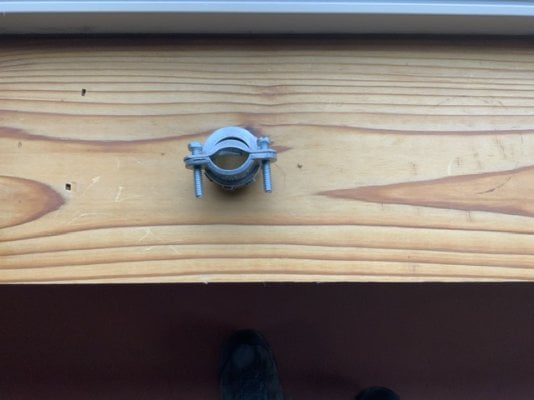I’m about to replace the 10/2 wire from the truck battery to the camper battery. I have these components
ATC 2021 Panther
2019 Superduty (I don’t believe that the truck has a smart alternator)
6 awg cable (2 conductors)
(2) 80 amp circuit breakers for each end of 6 awg cable
(1) 30 amp circuit breaker for 160 watt roof top solar
Renogy 50amp dcdc with mppt controller
Battle Born 100amp 12v
I can purchase 25’ of carflex 3/4 inch nonmetallic conduit to run the cables at a reasonable price. Is this recommended to protect the cables from weather and road conditions? The existing cable is interior use 10/2 romex. One thought I have is that if the 6 awg cable causes too much voltage drop I could fish a 4 awg cable through the conduit fairly easily. Two 6awg cables fit easily in 3/4 inch carflex, but I’m not sure about 4 awg cables. Is conduit to protect the wiring necessary? I’d like this to last 10 years or more.
I see that the existing 10/2 cable ve- is connected to the same chassis point as the ve- cable from the battery. Is this the preferred grounding point? I assumed I’d run the cable to the negative battery post.
My first thought was to install the 80 amp breakers close to each battery. That would place the breaker between the dcdc and the camper battery on a short cable run, probably less than 2 feet. My current thought is placing it before the dcdc based on what I’ve learned here ( in fact, everything I know about this upgrade I’ve learned here).
Any insights on best practices will be appreciated. And thanks to the masters of electrons that share such good advice on this forum.
ATC 2021 Panther
2019 Superduty (I don’t believe that the truck has a smart alternator)
6 awg cable (2 conductors)
(2) 80 amp circuit breakers for each end of 6 awg cable
(1) 30 amp circuit breaker for 160 watt roof top solar
Renogy 50amp dcdc with mppt controller
Battle Born 100amp 12v
I can purchase 25’ of carflex 3/4 inch nonmetallic conduit to run the cables at a reasonable price. Is this recommended to protect the cables from weather and road conditions? The existing cable is interior use 10/2 romex. One thought I have is that if the 6 awg cable causes too much voltage drop I could fish a 4 awg cable through the conduit fairly easily. Two 6awg cables fit easily in 3/4 inch carflex, but I’m not sure about 4 awg cables. Is conduit to protect the wiring necessary? I’d like this to last 10 years or more.
I see that the existing 10/2 cable ve- is connected to the same chassis point as the ve- cable from the battery. Is this the preferred grounding point? I assumed I’d run the cable to the negative battery post.
My first thought was to install the 80 amp breakers close to each battery. That would place the breaker between the dcdc and the camper battery on a short cable run, probably less than 2 feet. My current thought is placing it before the dcdc based on what I’ve learned here ( in fact, everything I know about this upgrade I’ve learned here).
Any insights on best practices will be appreciated. And thanks to the masters of electrons that share such good advice on this forum.

